GRAN CANARIA
History

History
Cities in GRAN CANARIA
| Maspalomas | Playa de taurito | Playa del ingles |
Popular destinations SPAIN
| Andalusia | Catalonia | Costa blanca |
| Costa brava | Costa del sol | El hierro |
| Formentera | Fuerteventura | Gran canaria |
| Ibiza | La gomera | La palma |
| Lanzarote | Mallorca | Menorca |
| Tenerife |
History
Guanchen
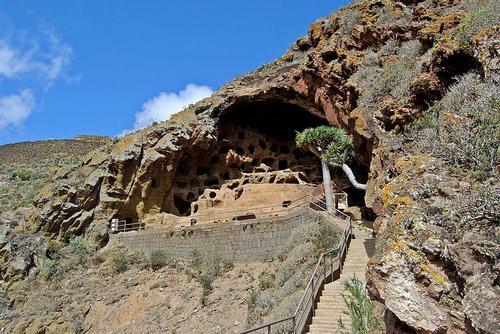
The original inhabitants of Gran Canaria were the Guanches, a people probably descended from Berber tribes from North Africa. Approx. 4500 years ago they made the crossing to the Canary Islands. The first people to arrive in Gran Canaria were of the more Western European looking Cro-Magnon breed, later followed by a southern Mediterranean race, the Majos. The people of the Cro-Magnon race lived mainly in Gran Canaria and Tenerife, the Majos in Lanzarote and Fuerteventura.
Initially they collected edible crops and caught fish. Later, around the turn of the century, they began to live in groups, cultivate the soil (beans, wheat, barley, and peas) and raise livestock. Utensils were made of stone, wood, and pottery, and caves were sometimes painted. The Guanches on the different islands had little contact with each other and therefore developed their own lifestyle. There were also differences between, for example, coastal and mountain residents on the islands themselves.
For example, in the mountains of Gran Canaria, the mummified dead were buried together and upright in caves; burial mounds were made on the coast to house the dead.
By the 14th century, the territory of Gran Canaria was divided into two "guanartemato": Telde and Gáldar. At the head of each guanartemato was a "guanarteme" chosen from among the male members of the royal family by the council of the nobles.
Another member of the royal family was the religious leader, the "faycán," who, however, was also emphatically involved in day-to-day affairs. Then there was a civil council, the "tagoror", which consisted of the guanarteme, the faycán and the nobles. The military council was made up of six army commanders, and both councils advised the guanarteme, which was very powerful.
The Spaniards called these people Guanchen, which literally means “son of Tenerife” (guan = son and Achinech = Tenerife).
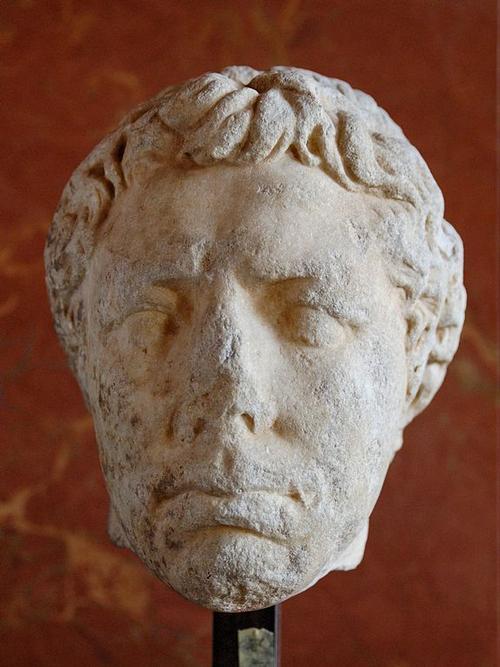
Approx. 30 years BC. The Roman King Juba II of Mauritania sent an expedition to the islands and its members found a large breed of dog. Since that time the islands have also been called Dog Islands (Insulae Canium) or Canary Islands (canis = dog in Latin).
Before the first Europeans appeared, the Greeks and the Romans already knew about the existence of the Canary Islands. Homer, Plato, Herod, and Salust have already spoken and written about the islands. Probably the Phoenicians already around 1000 BC. traded with the then inhabitants of the islands.
Europeans take possession of the islands
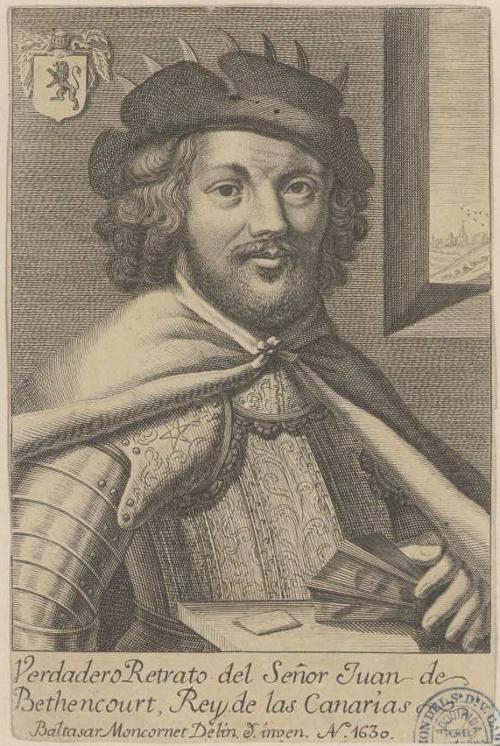 Gran Canaria Jean de BéthencourtPhoto: Public domain
Gran Canaria Jean de BéthencourtPhoto: Public domain
Until the 13th century, the islands were no longer mentioned in historiography because they were outside the regular shipping routes. The conquest of the Canary Islands began with their rediscovery in 1312 by Lanzarote Malocello from Genoa. After his return in 1339 some islands appeared on the Majorcan maps of the cartographer Dulcert. In 1344, Luis de la Cerda, great-grandson of Alfonso X of Castile, was crowned by Pope Clement VI as King of "Fortuna", as the islands were then called. However, the new king died very soon, eventually Roberto de Bracamonte received the Canary Islands as a gift from Enrique III of Castile. Robert de Bracamonte in turn gave the islands to his Norman cousin Jean de Béthencourt.
In 1402, the Castilian King Enrique III ordered the Norman nobleman Jean de Béthencourt to conquer the islands. De Béthencourt accepted the order, but the Guanches defended themselves fiercely and eventually failed to capture Gran Canaria and La Palma, the other islands did.
In 1478 another attempt was made by King Ferdinand of Aragon and Queen Isabella of Castile, who jointly ruled Castile. Fighting took place for five years, but on April 29, 1483, the armies of the two guanartematos, Telde and Galdár, were defeated at Arucas, and not long after, La Palma was also conquered. In 1496 the last resistance was also broken and Tenerife placed under the authority of the Castilian crown. From that time on, the Guanches had a hard time. Many were sold into slavery and the many illnesses brought by the conquerors cost the lives of many of the original inhabitants. They also lost all their land. Only the Guanches who had cooperated with the occupiers kept some more freedom and land for themselves. Eventually the Guanches mixed with the conquerors and then with slaves, Portuguese and Majorcan Jews.
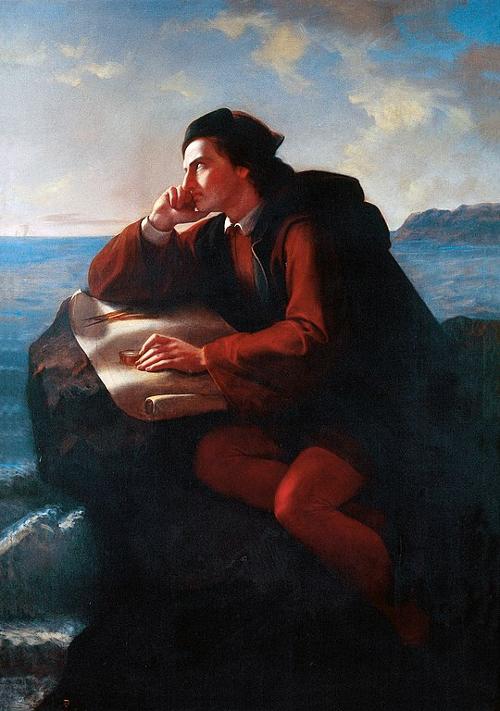 Columbus, Gran CanariaPhoto: Public domain
Columbus, Gran CanariaPhoto: Public domain
Las Palmas, the current capital of Gran Canaria, played a prominent role in Christopher Columbus's travels to America; he used this place as a stopover during three of his voyages of discovery, all of which started in Cádiz, in the south of Spain. Because the Canary Islands were perfectly situated in relation to Central America and South America, the islands grew into an important trade center (Portuguese, British, Dutch, Irish, Jews and Genoese) and many islanders also left from here to the 'New World '.
Because the Spanish Empire was now at its peak as a colonial power, the importance of the port of Las Palmas also increased. A stain on the history of the islands was the slave trade; millions of blacks from West Africa were deported to America via the Canary Islands. The often richly loaded ships from America were regularly raided by pirates and the settlements on the Canary Islands were often looted.
In 1599 Las Palmas was occupied for some time by the Dutchman and vice-admiral Pieter van der Does. A fleet of 74 ships brought about 7,000 men ashore, who managed to occupy the city after a fierce battle of several days. The Spaniards then started a guerilla war, which cost Van der Does so many deaths that more than a week later he took the hare path; first, however, he burned the city down. After the fall of the Spanish Empire in the 18th century, the Spaniards managed to preserve the islands, despite a number of attempts by the British to conquer the islands. The attack of the famous British Admiral Horatio Nelson, who was repulsed in 1797, became famous. In these fights, Nelson lost his right arm.
Spanish province
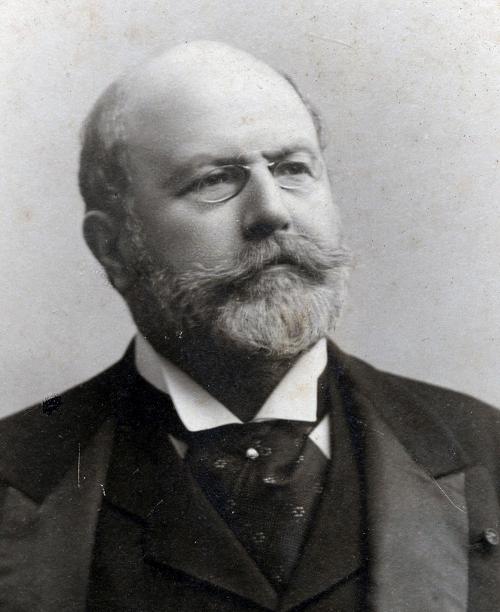 Fernando León y Castillo, Gran CanariaPhoto: Public domain
Fernando León y Castillo, Gran CanariaPhoto: Public domain
In 1821 the Canary Islands became a Spanish province with Santa Cruz de Tenerife as the capital.
Due to the strategic location of the Canary Islands in relation to Africa, the economic importance of the archipelago increased even further in the 19th century. This important economic position increased even more when in 1872 the ports of Gran Canaria and Tenerife were granted the status of free port. This had the consequence that from that date onwards people were largely economically dependent on the international political and economic situation.
From 1880 to 1918, the Canary Islands were completely dominated politically by the Canary Liberal Party, which at the time was led by León y Castillo. After his death, a conflict for supremacy broke out between the archipelago's two largest islands, Gran Canaria and Tenerife. As a result, the archipelago was divided into two provinces in 1927; in the west the province of Santa Cruz with the islands of Tenerife, El Hierro, La Gomera and La Palma and in the east the province of Las Palmas de Gran Canria with the islands of Gran Canaria, Fuerteventura and Lanzarote.
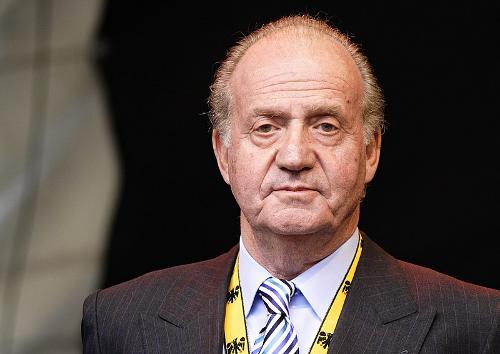 King Juan Carlos SpainPhoto: ? (Aleph) CC 2.5 Generic no changes made
King Juan Carlos SpainPhoto: ? (Aleph) CC 2.5 Generic no changes made
In 1936 a popular front consisting of liberal republicans, socialists, syndicalists and communists won electoral victory and was allowed to form a government. To take some wind out of his sails, Francisco Franco was promoted as military governor of the Canary Islands. Franco immediately showed his true intentions and oppressed the population of the islands. In Tenerife, he made plans to overthrow the National Popular Front government and in July 1936 he joined other soldiers and the Spanish Civil War broke out.
After a bloody battle, Franco was victorious in 1939. Franco died in 1975 and Spain turned into a parliamentary democracy under the impetus of King Juan Carlos de Bourbon y Bourbon. Democratization gave several provinces of Spain more autonomy, including the Canary Islands in 1982. As a result of the continuing rivalry between Gran Canaria and Tenerife, both islands were allocated half of the government departments. Santa Cruz de Tenerife was given the parliament and Las Palmas de Gran Canaria the Supreme Court. From the 1960s onwards, the Canary Islands developed at lightning speed into today's modern society, under the impetus of tourism.
See also the history of Spain on TheWorldOfInfo.
Sources
Anderson, B. / Gran Canaria
Deltas
Evers, K. / Gran Canaria, Fuerteventura, Lanzarote
Gottmer/Becht
Gruschwitz, B.F. / Canarische Eilanden
Het Spectrum
MacPhedran, G. / Gran Canaria
Kosmos-Z&K
Rokebrand, R. / Reishandboek Gran Canaria
Elmar
Weniger, S. / Gran Canaria
Van Reemst
CIA - World Factbook
BBC - Country Profiles
Copyright: Team The World of Info